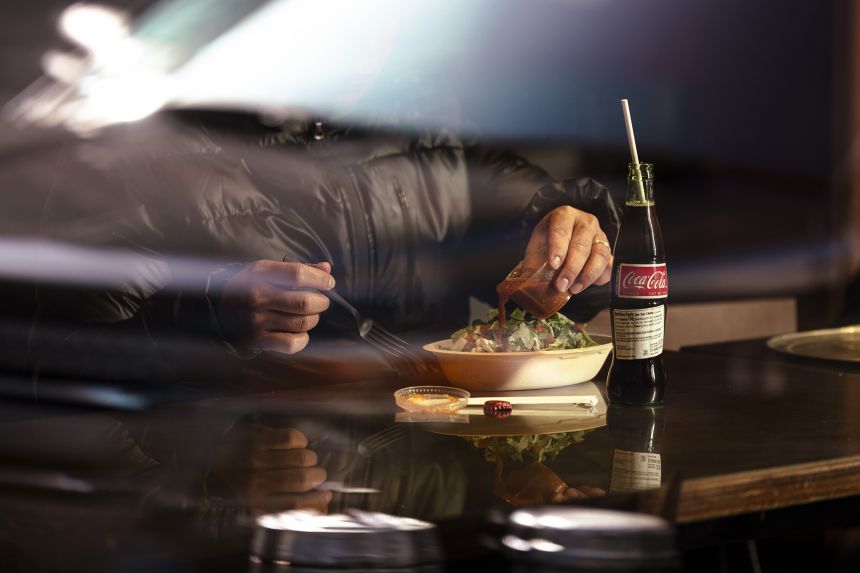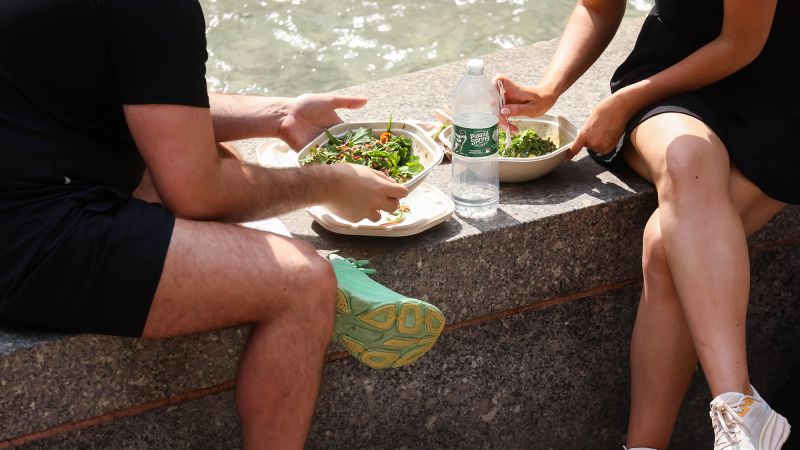New York
—
Purveyors of the so-called “slop bowl” just had another messy quarter.
What was once the lowly desk salad has since expanded to a mish-mosh of options in a bowl, ranging from proteins like carne asada and lamb meatballs to toppings like tzatziki or red chimichurri, and has become a staple of the American worker’s diet.
But the big three slop slingers — Cava, Chipotle and Sweetgreen — all reported similar problems in their recent earnings: Younger customers, particularly those aged between 25 to 35, are pinching pennies and choosing to forgo the $15 (or $20) warm bowls.
Instead, they are packing their lunches or gravitating toward fast food chains offering deep discounts, thus hurting the trio’s bottom lines.
The fast-casual restaurants face several issues, in particular that the “softer wage and spending growth” that had been affecting lower-income consumers “seems to be creeping up into the middle income and young professional consumer,” according to Brian Vaccaro, restaurant analyst at Raymond James.
Anxiety around political issues, such as the government shutdown, as well as increased competition from value meals at fast food rivals, are also affecting their customer bases, Vaccaro said.
Cava, which serves customizable Mediterranean-style bowls, is one chain that’s feeling the effects. The stock, which surged 162% in 2024, has fallen nearly 60% this year.
“We know our Gen Z consumers are certainly facing headwinds this year that may not have existed last year,” Cava CEO Brett Schulman told CNN, citing the resumption of student loan repayments, record-low consumer sentiment levels and Gen Z unemployment that’s “double the national rate.”
Last week, Cava (CAVA) revealed that its traffic was flat for the second consecutive quarter, so it cut its same-store sales outlook to 3% – 4% (from 4% – 6%) for the rest of 2025.
“When you look at the (fast-casual) industry since 2019, while sales have grown, transactions are actually down 7%,” he said. “The industry has gotten too expensive for consumers.”
As a result, some of those once reliable customers are now buying more groceries to save money, said R.J. Hottovy, a restaurant analyst at data analytics firm Placer.ai.
“These consumers are simultaneously shifting visits to grocery chains like Trader Joe’s and other alternative food retailers as they seek more affordable options,” he told CNN.
That was pointed out during Chipotle’s earnings report, which showed miserable results at the end of October. The chain cut its sales-growth forecast for the third-straight quarter, and shares are down 50% this year.

CEO Scott Boatwright said younger consumers, particularly those aged 25 to 35 who make up a quarter of Chipotle’s sales, “pulled back meaningfully.”
“We’re not losing them to the competition; we’re losing them to grocery and food at home,” he told analysts during Chipotle’s latest earnings call. “It is one of our core consumer cohorts. They feel the pinch and we feel the pullback from them as well.”
He argues that Chipotle (CMG) is still more affordable than its competitors.
“The fast-casual sector is just out of favor and has been deemed unaffordable and we are lumped into that,” he said, bristling at criticism that Chipotle has become too expensive. “But I will still tell you, we are still at 20% to 30% discount to our fast-casual peers in the sector.”
Vaccaro agrees that Chipotle’s value proposition “remains very strong with an entry-level price point of less than $10 in most markets (excluding higher-cost markets like New York).” But he thinks some consumers might have forgotten, since the chain typically avoids advertising around its prices.
Still, Chipotle is faring better than Sweetgreen, the once high-flying salad and warm bowl chain whose stock finished nearly 200% higher in 2024.
Shares have, however, nosedived 83% this year, and the company’s market cap is hovering at $680 million — a steep fall from its nearly $5 billion valuation when it went public in 2021.
Sweetgreen (SG) revealed in its earnings last Thursday that same-store sales slid 9.5% and visits fell nearly 12%. That caps off a tough year for the brand, which ended a salad subscription program and axed selling fries after just five months.
“The 25 to 35 (year old) consumer is the most under pressure, and they make up about 30% of our consumer base,” said Sweetgreen CFO Jamie McConnell on a call with analysts, adding that their spending declined about 15%.
To lure back value-conscious customers, Sweetgreen this week will begin promoting that it has boosted protein portions by 25%.
Despite the current problems, analysts say the chains are well positioned for the future. That’s because there will always be consumer appetite for “high quality, fresh ingredients at reasonable price points,” said Vaccaro.

